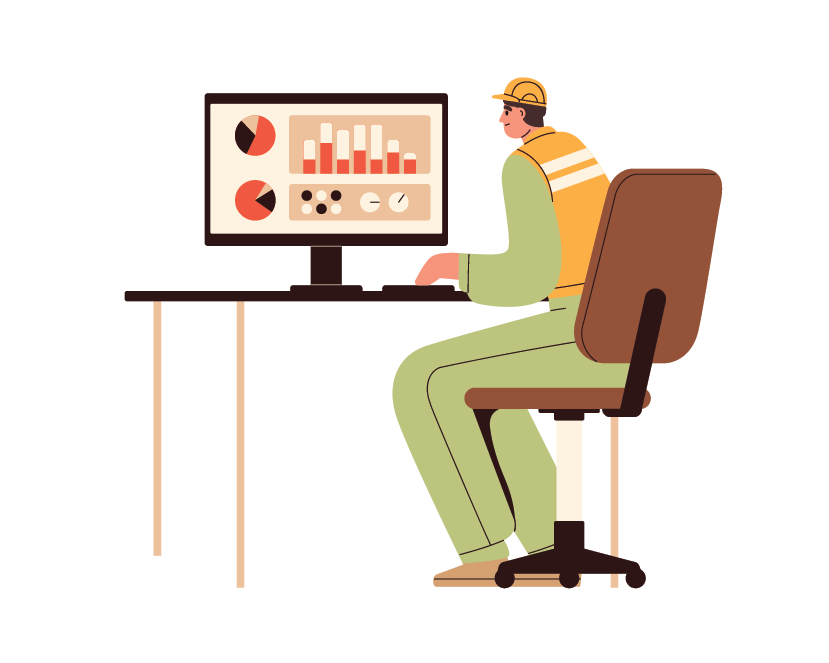- Guest Contributor
- March 15, 2024
The warehouse industry has experienced tremendous change over the past few years. First, the pandemic disrupted supply chains everywhere. From there, warehouses furiously staffed up to meet increased demand, while also adapting to accommodate social distancing mandates.
Although some of this has stabilized, warehouse staffing remains a struggle in 2024. Workers now demand flexible work schedules and other perks. Meanwhile, the surge in online shopping has put greater demands on fulfillment and distribution centers than ever before. These factors have combined to create a talent shortage that’s impacting warehouse managers everywhere.
The warehouse industry trends detailed in this article reflect a dynamic landscape. Between a looming recession, historically low unemployment, technological advancements, and shifting workforce demographics, there are countless variables at play. That’s why 2024 promises to bring innovation in warehouse recruitment and retention.
Anyone looking to keep their operations running smoothly in 2024 should take note. Read on for a deep dive into the current job market and the warehouse staffing solutions that are on the rise.
Technological advancements and the birth of smart warehouses
Technological advancements like artificial intelligence (AI), robotics, and virtual reality (VR) are impacting every industry. In the logistics sector, these are being used to create smart warehouses that rely on machines to complete tasks previously performed by humans.
The benefit is twofold. With the advent of advanced automated systems and robots, warehouse operations are becoming faster, more efficient, and safer. What’s more, employers are able to save costs by reducing the number of workers on the warehouse floor.
Between wage increases and high turnover rates, warehouse staffing costs are up. So offloading tasks to machines makes a lot of sense. Plus, the right application of tech can improve job satisfaction by improving ergonomics for workers. But organizations will need to find the appropriate balance between humans and automation.
Let’s dive into the three smart warehouse technologies driving the biggest impact today: robotics, AI, and AR/VR.
Automation and robotics
There’s been buzz about Amazon using delivery drones for years, so why not leverage autonomous vehicles further up the supply chain? Warehouse facilities are now experimenting with drones and robots for inventory management, completing tasks, surveillance, and transportation.
Bringing automation and robotics into the warehouse isn’t new, but today’s tech-enabled warehouses look a lot different than they used to. Picture fleets of drones sweeping the warehouse each night and robots working alongside humans to accomplish tasks that are dynamic in nature.
One of the most significant benefits of robotics in warehousing is the improved accuracy of inventory and order fulfillment. Automation reduces the chances of human error, leading to a more efficient operation. Warehouse processes such as picking, packing, loading, and unloading can all be streamlined with this technology.
That said, the high setup and maintenance costs of robotics have restricted growth in the past. According to Next Move Strategy consulting, though, the warehouse robotics market is expected to reach just shy of 16 billion U.S. dollars by 2030.
Whether you’re able to start experimenting today or are waiting for more affordable solutions, robotics and automation will define warehouses of the future. Amazon, Walmart, and IKEA have already been quick to invest.
Organizations driving warehouse automation trends:
- Toyota announced two autonomous mobile robots (AMRs) in November 2020, the Center-Controlled Rider Automated Forklift and the Core Tow Tractor Automated Forklift. Both used advanced sensors for mapped-object detection to ensure precision and safety.
- Walmart is bringing robots to every U.S. distribution center after initially joining forces with the robotics manufacturer Symbotic in 2021. These robots assist with moving inventory around, as well as using arms to pick, place, and de-palletize items.
- Ikea now has 100 drones flying around its European warehouses to stock inventory during store off-hours. This involves sweeping warehouse pallets; capturing video, images, and 3D scans; and downloading the data for managers to review.
AI-powered software
A piece of computer equipment is only as smart as the software it’s programmed with. As such, many of the machines detailed above rely on AI to complete such sophisticated tasks. This new generation of AI-powered robots goes beyond moving objects from point A to point B thanks to deep learning.
Karen Hao of MIT Technology explains:
“Previous commercial robots had been limited to performing tasks with little variation: they could move pallets along set paths and perhaps deviate slightly to avoid obstacles along the way. The new robots, with their ability to manipulate objects of variable shapes and sizes in unpredictable orientations, could open up a whole different set of tasks for automation.”
While traditional robotic arms must be programmed to perform the same movements again and again, AI allows these machines to adapt as their surroundings change. Today’s warehouse robots come equipped with visual, auditory, thermal, and haptic sensors—which allow them to capture environmental information and make decisions based on input.
Covariant, a leading AI firm, has raised $222 million for its innovation in the warehouse space. And because their Covariant Brain software is hardware agnostic, it’s being used to power robots across the world. Retailers, pharmacies, manufacturers, and more are able to thrive despite labor shortages thanks to AI-robotic automation.
AI-powered warehousing can also assist with how business is conducted behind the scenes. Workforce planning and performance management are two key areas where logistics managers are benefiting from it.
Consider the ways warehouses were challenged to forecast demand during the pandemic. Despite this, the supply-chain software company E2open cut forecasting errors by 32% using AI. They did so using their Demand Sensing application, which creates current market forecasts by applying machine learning (ML) pattern recognition to real-time market signals.
Even small-scale warehouses with a limited budget can benefit from AI. That’s because free tools like ChatGPT, Google Bard, and Bing streamline a variety of clerical tasks. Say you’re looking to speed up the hiring process. ChatGPT makes it easy to generate job descriptions, interview questions, offer letters, and more.
It’s a no-brainer. AI will transform every industry. And if you aren’t using it, it’s time to start.
Augmented reality (AR) and virtual reality (VR)
Mark Zuckerberg’s big bet on the metaverse might not have panned out, but immersive AR/VR technologies are still worth watching. The value of this technology in commercial settings is far-reaching and the impact on staffing is significant.
Early adopters in the warehouse industry are using AR/VR for inventory management, training, safety, quality control, surveillance, and more.
VR shows the most promise for training, which is a major need given the risk of injury on warehouse floors. Rather than forcing brand-new employees to learn by making mistakes on the job, VR immerses them in a safe look-alike environment. For instance, truck loaders can get trained on proper lifting techniques, maximizing space when loading a truck, and situational awareness.
When it comes to AR, the applications are even broader. The same truck loader could use AR glasses to identify the best way to fit products on the lifting truck. Likewise, AR glasses can be used to scan barcodes and RFID labels, making the order-picking process efficient and hands-free.
With AR and VR, it’s not a matter of replacing workers with technology, but rather empowering them. Workers are able to perform their job more efficiently and with fewer steps, so everybody wins. AR/VR technology also helps reduce errors and improve safety, both of which translate to cost savings.
As we move further into 2024, it’s likely that we’ll see continued adoption of AR/VR technology in the warehouse industry, with even more innovative solutions emerging to help warehouse staff work smarter and more effectively.
Changing workforce demographics in the new era of warehousing
The warehousing industry is undergoing a major shift in workforce demographics. The pandemic surge in hiring made an already diverse workforce even more so, while the demand for remote work flexibility and other perks skyrocketed.
Getting the most from your workforce requires meeting them halfway. That’s why organizations need to consider the unique needs of their aging and diverse employees as they approach management.
Aging workforce
America’s workforce is aging. Today’s retirement-age and older adults outnumber children under the age of five, and almost half the country will be 40 or older by 2040. This trend isn’t isolated to the warehouse industry, but the impact is greater.
Given the physical nature of warehouse jobs, an aging workforce impacts workplace safety and employee retention. No one wants to come home with an aching back each night, so the onus is on employers to make manufacturing jobs more attractive to their workers over the age of 40.
Luckily, the warehouse technology trends detailed in the previous section have the potential to make a big impact here. The most physically demanding tasks in warehouses can be delegated to machines, while AR can help improve warehouse ergonomics. After all, lift assist devices already let workers move heavy boxes as though they’re weightless.
By embracing technology, warehouse managers can make the job less physical and keep their aging workers around until retirement. What’s more, Gen Z and Millennials expect technology to be integrated into their day-to-day life. So adopting new technology also helps with recruiting and retaining younger workers.
Craig Moore and Michiel Veeman of Körber Supply Chain Solutions explain:
“Gen Z and Millennial workers typically prefer technology that engages them visually rather than verbally. Virtual and augmented reality (AR) technologies, such as holo-lens headsets that can overlay arrows on the floor to guide workers through the warehouse and highlight the shelves and items they need to pick, are therefore attractive solutions for them. These new technologies have also led to the emerging trend of gamification, which can make warehouse work more mentally stimulating and entertaining. Through gamification, businesses are even able to offer monetary incentives for increased productivity.
Warehouse management teams can also be strategic in the technologies they make available to older workforces. There’s a stereotype that older workers can be set in their ways—many Baby Boomers are accustomed to manual labor and prefer voice-picking technology or radio-frequency (RF) technologies, for example. However, most warehouse technologies are intuitive and user-friendly, which allows both younger and older employees to easily learn how to operate them. This saves workers valuable time and energy, which in turn can lead to better retention numbers and increased productivity.”
Diversification
Age isn’t the only way warehouse workers are demographically diverse. Gender, language, literacy, and cultural backgrounds are all sources of difference. While diversity is great, it can create challenges for warehouse managers trying to get distinct individuals to work as a team.
For instance, language diversity complicates job training and communication. Likewise, as more women enter the traditionally male-dominated warehouse workforce, new sources of tension can arise.
Employers looking to attract and maintain a diverse workforce must create inclusive work environments. This involves providing equal opportunities for all employees, regardless of their gender, race, or ethnicity.
Signage within the warehouse should use multiple languages as well as imagery where possible. Work instructions should also be provided in a worker’s native language, and hiring managers should incorporate bilingual workers into the mix. At the very least, managers should learn key phrases in their workers’ primary language to improve communication.
Remote workforce
The idea of a “remote warehouse job” used to be an oxymoron, but that’s no longer the case. Working from home became the norm during the pandemic, and 58% of Americans now have the opportunity to work from home at least once a week.
Technologies like RFID tags make it possible for supply chain managers to gather real-time data about warehouses without being physically present. As a result, warehouse monitoring no longer needs to be performed by someone in the building.
But what about other tasks, like operating a forklift? Eventually, these will also go remote. Using real-time video, future tech-enabled forklifts will be operated by “digital drivers” controlling the machines from remote locations.
The manufacturing industry is already benefiting from these types of remote work solutions. For instance, EWI combined robotics with live streaming to build a tele-welding solution. Countless on-site warehouse jobs could be reimagined to support remote work—which would let employers tap into a larger pool of skilled workers. Limiting the number of people on warehouse floors with remote work solutions can also improve safety for the entire staff.
Training and development to enhance the employee experience
One of the latest trends in warehouse management is a renewed focus on training and development. Employers who invest in their employees through education programs can reap many benefits, including increased productivity, employee retention, and improved morale.
While you’re (hopefully) already training your employees when they start the job, it shouldn’t stop there. Training only goes so far if you don’t continue to sharpen your workers’ skills. For this reason, upskilling and reskilling have become common. This lets employers develop existing staff rather than always having to source new workers.
Besides, job development is key to retention. Even long-tenured employees benefit from the ability to expand their qualifications and polish up on old skills. This understanding has resulted in many warehouse managers prioritizing training, development, and employee engagement in 2024.
Skills and competencies
When it comes to hiring new employees, weighing both skills and competencies can help prevent mis-hiring and improve the long-term success of a potential candidate.
This is because the two terms are not synonymous. There’s a very real difference between skills vs. competencies, and understanding the nuance allows warehouse managers to more effectively staff their floors.
Let’s break the two terms apart:
- Skills describe learned abilities that allow someone to complete specific tasks required by their job. These can be technical skills (such as proficiency in using warehouse equipment or knowledge of inventory management software) or soft skills (such as effective communication or teamwork). Skills are typically acquired through training or experience and can be quantified and measured through testing or observation.
- Competencies refer to a candidate’s broader knowledge, attitudes, and behaviors that are essential for success in a particular role. These may include problem-solving, adaptability, leadership, and critical thinking. Competencies are often more difficult to quantify or measure, as they relate to a candidate’s personal characteristics and potential rather than specific skills or knowledge.
Recognizing a candidate’s skills and competencies during the interview stage is crucial for two reasons:
- While skills can be taught in a matter of days or months, competencies are less agile. Someone can become skilled in operating a piece of equipment in a short period of time. Learning to be a competent warehouse safety manager, on the other hand, takes much more practice and requires certain attitudes and values that aren’t as easy to acquire.
- If hiring managers only look for skills and don’t evaluate competencies as well, they risk hiring the wrong person for a role. For example, a warehouse worker who is highly skilled in inventory management software but lacks adaptability or problem-solving abilities may struggle to adapt to handle unexpected challenges in the warehouse.
By understanding the difference between skills and competencies, you’re able to develop a more comprehensive hiring strategy that accounts for both the technical skills and broader competencies required for success in the role. This ensures that your warehouse is staffed with workers who have the potential to grow and succeed in their roles—ultimately contributing to the organization’s success.
Upskilling and reskilling
In 2024, savvy organizations are identifying opportunities to upskill (enhance their employee’s abilities) and reskill (train their employees on new skills).
With the rapid pace of technological change, many jobs are becoming obsolete, and new jobs are emerging. A surefire way that warehouses can adapt to this change is by proactively developing new skills in their employees that keep up with these changes.
Ways to upskill and reskill employees include:
- Organizing training workshops
- Providing reimbursements for educational programs
- Offering online courses to your staff
- Providing more formalized on-the-job training opportunities
Employers should also be flexible in the types of training they offer, as well as the frequency and delivery method. Some employees prefer online training, while others prefer in-person training. Offering a variety helps accommodate different learning styles and preferences.
Employee engagement
Happy workers are productive workers—13% more productive, according to a recent study. They’re also more likely to stay with a company and recommend it to others.
A key driver of workplace happiness is employee engagement, which is why many employers today are focusing on creating a culture where employees feel valued and supported in their professional growth.
The warehouse industry isn’t unique in putting a new emphasis on employee engagement. On the contrary, the warehouse and logistics sector lags behind other industries. That’s why it’s crucial to take note of this trend now.
Alex Kowalski, a professor of human-resource studies at Cornell University, has been testing the impacts of employee engagement at warehouses by bringing workers and managers together for biweekly brainstorming sessions about problems the teams are facing.
“I’m not saying it’s easy,” Kowalski says, “but warehousing can be reimagined in a way that makes it a better place to work. Just giving workers more voice, more input, more say over the conditions of their work is the first step towards making the job quality at warehouses better.”
What other ways can employers boost engagement?
- Host catered lunches and workplace parties
- Develop recognition programs where coworkers can nominate one another
- Offer paid days off when goals are met
- Use employee satisfaction surveys to solicit feedback from your workers
- Implement team-building activities to grow camaraderie
- Have a suggestion box where employees can submit anonymous feedback
- Encourage open and honest feedback from employees
- Lead by example by being transparent with workers
Increased focus on health and safety
Warehouse injuries are on the rise, increasing from 206,900 cases in 2020 to 253,100 cases in 2021. And this makes sense. The surge in hiring correlated with less experienced workers entering the field. It also resulted in more people on the warehouse floor, both of which contributed to congestion and injury.
There’s no silver lining to workplace injuries, so warehouses are prioritizing health and safety in 2024. This focus is also going beyond physical safety to address mental health as well..
Burnout can be just as big of a threat to productivity as injury. For this reason, managers should approach health and safety holistically—identifying ways to improve workplace ergonomics, connect employees with mental health resources, train employees on safety procedures, provide adequate safety equipment, and promote a workplace safety culture.
Covid-19 impact
Since the pandemic, bringing new hires up to speed has been a constant battle. The influx of workers without warehouse experience and additional traffic on warehouse floors has led to more injuries.
Warehouse managers now recognize the need to prioritize the health and safety of their employees, not only to comply with legal requirements but also to keep everything running smoothly. This involves implementing policies and procedures to prevent accidents and injuries, as well as protecting workers from exposure to hazards such as chemicals and dust.
Beyond that, an increased reliance on technology can once more alleviate these issues. The most common injury in warehouses today is forklift accidents, which is why turning the humble machine into an intelligent forklift could be this century’s biggest driver of warehouse safety improvements.
The smart forklifts being developed today combine cameras, sensors, and AI to ensure that warehouses can meet their workflow needs while maintaining safety and compliance. Any areas where technology can be used to protect workers’ safety will go a long way in making warehousing a more attractive industry.
Ergonomics
Right after forklift accidents, injuries caused by improper lifting and overexertion are the second most common safety incidents on warehouse floors. These can range from minor muscle strains to serious musculoskeletal injuries.
Because warehouse pickers and packers must perform repetitive tasks, muscle strains and the like are hard to prevent. The diversification of the warehouse industry has also brought new challenges to safety managers. All these factors come down to ergonomics.
While warehouses used to be male-dominated, women now make up 25% of the workforce. Asking a 100-pound woman to perform the same tasks that were traditionally assigned to a 200-pound man doesn’t make a lot of sense, especially when a principal of ergonomics is designing tasks to fit the worker rather than making workers force their bodies to fit tasks.
So how can warehouse managers improve ergonomics? There are plenty of tactics:
- Equip your warehouse with equipment that can position loads ergonomically to prevent unnatural movement.
- Encourage frequent breaks so workers can recover and increase blood flow.
- Identify ways to relegate demanding tasks to machines wherever possible using automation and robotics.
- Train workers on proper lifting techniques.
- Use hands-free picking technologies.
Again, technology promises to play a major role in improving ergonomics. Robotics, smart AR devices, VR training, and more will have a measurable impact on warehouse injuries.
Mental health support
Beyond physical health, mental health is also important. The pandemic took a toll on all of us—and warehouse workers bore a lot of the brunt.
Going forward, it’s important for employers to offer resources that promote the psychological well-being of their employees. This can take the form of access to mental health professionals, resources like mindfulness apps, and the ability for employees to voice their needs.
The influence of employee well-being on the success of the business should be top of mind for managers. When employees feel supported and valued, they’re more likely to be engaged and motivated in their work. This can lead to increased productivity, better customer service, and a more positive work culture.
Recruitment and retention strategies to conquer the warehouse boom
Covid-19 changed the warehouse industry in myriad ways, with a newfound focus on employee satisfaction as a common theme. This focus is also in every employer’s best interest. That’s because if you aren’t treating your workers as well as your competitors are, you’ll lose them to other warehouses.
“An internal Amazon memo from 2021 warned that if the company didn’t do more to reduce its catastrophically high turnover, its warehouses could run out of people to hire by 2024. Treat enough workers as disposable, and eventually there won’t be any workers left to dispose of.”
The most common complaint among warehouse workers is the unpredictability of their schedules. Luckily, there’s an easy way to make your core employees’ hours more stable while continuing to meet the whims of online shoppers. By sourcing temporary workers from a staffing platform like Jobble you’re able to avoid burnout for your core team while keeping up with warehouse tasks.
“The push to satisfy customer demand as quickly as possible has really led companies to adopt what they call a flexible staffing strategy,” explains Alex Kowalski, a professor of human-resource studies at Cornell University.
In addition to flexible staffing, warehouse managers are implementing innovative recruitment techniques, competitive compensation packages, and employee recognition programs.
Innovative recruitment techniques
Finding creative ways to entice warehouse workers is now a must. Warehouse hiring managers are turning to recruitment and employee engagement methodologies previously outside of their wheelhouse.
Competitive pay is the obvious place to start, which we’ll cover shortly. Flexible and predictable scheduling also goes a long way. Again, for this you need Jobble’s warehouse staffing platform, which makes it easy to fulfill seasonal staffing surges and can be used to source temporary workers before bringing them on full-time.
After competitive pay and hours, recruitment comes down to making your warehouse somewhere that people want to work—and clearly articulating that in the job description. Tech like wearable devices and AR/VR training certainly stands out to younger employees. Employee engagement perks like catered lunches are also worth calling out.
Anything you can do to make the job more enjoyable will also help with employee referrals. If your workers enjoy their job, chances are they’ll sing the praises of your organization to others. Employee referrals can even be incentivized by offering a small bonus to every employee who passes on a candidate selected for hire.
Competitive compensation and benefits
While warehousing was traditionally considered a low-pay industry, that’s no longer the case. Nonsupervisory warehouse workers now average $21.55 and hour, outearning those at a similar level in fast food, retail, hospitality, and call centers.
This is a major trend that’s changed the industry. And while many warehouse leaders didn’t plan for things to pan out this way, it’s your job to keep up with the market value and educate the masses.
Make sure that you’re offering employees the appropriate wage based on job title and geographic location. Tools like salary.com make it easy to find out what’s standard. You’ll also want to check job listings from your competitors to see what their compensation and benefits package includes.
Once you’ve determined how much you should offer and formalized your benefits package, make sure to promote this information. Outline exactly what candidates can expect from you when you write your job ad and follow all of the best practices detailed here.
Employee recognition
Once you’ve recruited the right talent and provided workers with competitive compensation packages, it’s time to make employee recognition part of day-to-day operations. Warehouse managers who fail to do this in 2024 simply aren’t keeping up with the times.
When employees do something well, reward them! Whether it means highlighting their success in a staff meeting, writing a personal note, or nominating them as an employee of the month—recognition matters.
Employee recognition and transparent communication boost morale, improve retention, promote productivity, and encourage collaboration. In other words, it’s a win-win.
Conclusion
Warehouses employ more than 1.8 million Americans today. For that reason, improvements to job satisfaction in the industry have far-reaching impacts. Many of the warehouse trends detailed in this article have come about due to the pandemic-driven warehouse boom—but that doesn’t mean they’re temporary. Organizations that account for the many ways the industry is changing will be better equipped to drive innovation.
Securing talent also continues to be difficult for warehouse managers. That’s why leaders are putting creative tactics in place to prepare for what’s next. Between technological advancements like robotics and AI, training tactics to reskill the aging workforce, and an increased focus on health and safety—all the latest trends in warehouse management should underpin your recruitment and retainment strategy in 2024.
To recap, here’s a list of the warehouse staffing trends covered in this article:
- Retention is a common challenge in the warehouse industry—with flexible staffing strategies and innovative recruitment tactics being implemented across the board
- Robotics, AI, and AR/VR are driving significant impacts in the logistics sector and will transform the way warehouses are staffed.
- The warehousing industry is also undergoing a shift in workforce demographics due to diversification, the aging workforce, and the demand for remote work flexibility. Meeting the needs of this workforce is key to success.
- Employers who invest in their employees through education programs can boost productivity, employee retention, and morale.
- A prioritization of health and safety has resulted from the rising warehouse injuries during the pandemic. Technology, training, and health resources should all be used to keep workers safe.
How Jobble can help
If you’re looking for flexible staffing solutions to streamline hiring and improve retention, look no further than Jobble.
Hiring requires time and resources. But with Jobble, you’re able to hire great candidates—fast—while still focusing on your core initiatives. The all-in-one staffing platform connects businesses with the workers they need.
With Jobble, you get:
- Access to 5M+ gig workers
- 90% of shifts filled in 24 hours or less—guaranteed
- Streamlined onboarding
- Transparent hiring platform
What are you waiting for? Schedule a demo today.

About the Author: Traci Ruether is a content marketing consultant and writer specializing in SEO for SaaS brands. You can follow her on LinkedIn at linkedin.com/in/traci-ruether or learn more at traci-writes.com.










